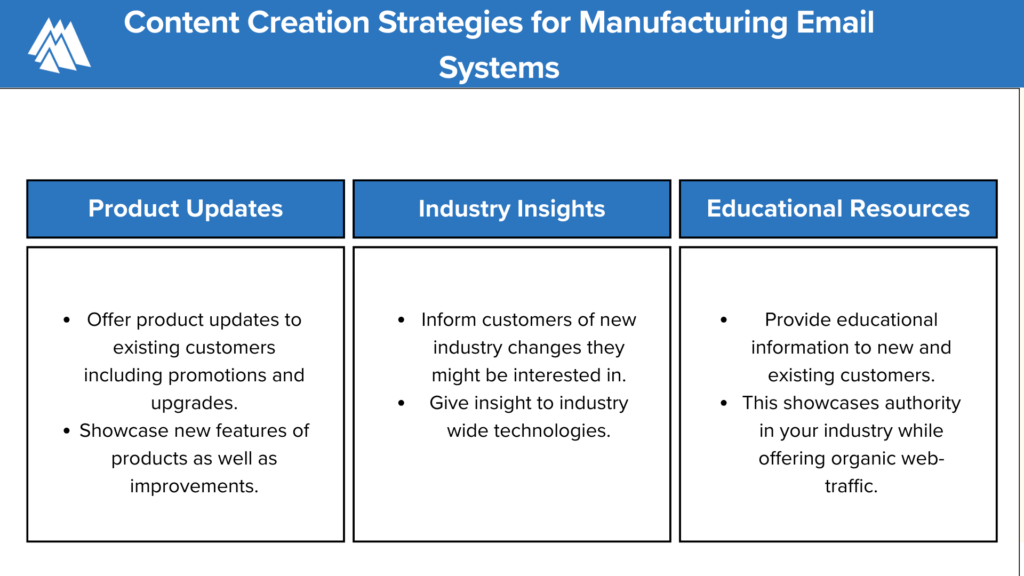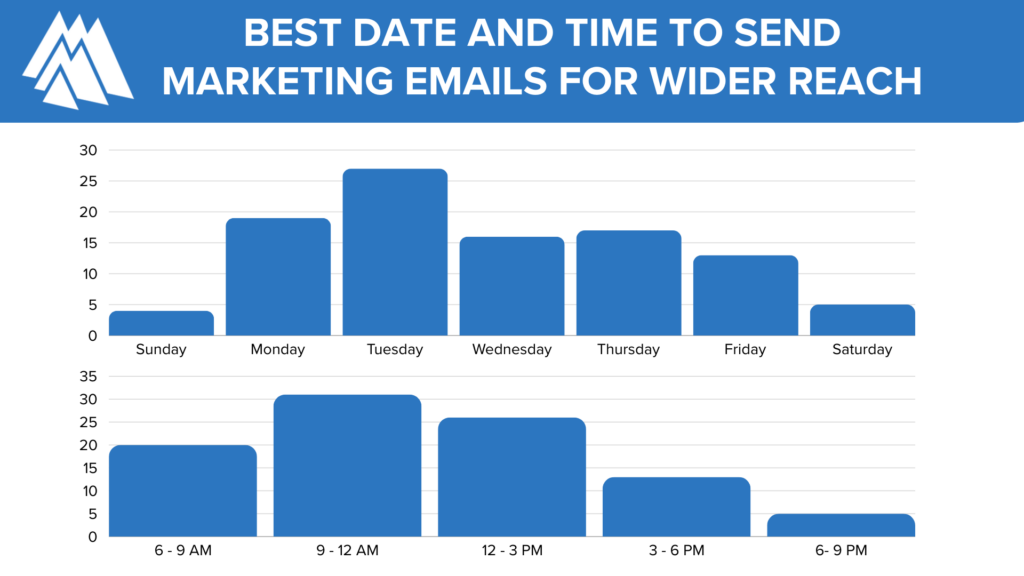Marketing in a niche B2B industry (like manufacturing) typically requires a different approach than D2C marketing. However, one constant and highly effective strategy remains across both. Email.
The reason is simple: your message needs to appear where your target audience goes. And nearly every single day, that destination happens to be their inbox.
Done well, email marketing can create tremendous ROI. It’s (relatively) inexpensive compared to paid tactics, and it provides a more personalized and richer user experience. But inboxes are crowded. For your message to cut through, you need valuable content.
By understanding the fundamentals of email marketing, manufacturers can leverage this powerful tool to enhance their marketing efforts, build stronger relationships with their loyal customers, and drive business growth. In this guide, we look at three of the essential phases that will elevate your inbox game.

The Power of Email Marketing in the Manufacturing Sector
Phase 1: Craft Useful Content
Because sales cycles in manufacturing are so long, a single email won’t be the reason you close a new customer. That means the content inside them shouldn’t appear like a quick pitch. You’re playing the long game, which means you need a strategy that provides value. To do this, you can build a content strategy that falls into these three buckets:
- Product Updates: Provide detailed information about new products, enhancements, or updates, including specifications, usage tips, and customer testimonials.
- Industry Insights: Share relevant industry news, trends, and analysis to position your company as a thought leader and provide value to your audience.
- Educational Resources: Create informative content such as how-to guides, tutorials, or whitepapers that address common challenges or questions your audience may have.

Some specific examples of emails you should consider sending include:
- Product Launch Announcements: Introduce new products or product lines to your audience, highlighting their features, benefits, and availability.
- Newsletter Subscriptions: Provide regular updates on company news, industry trends, and product developments to keep subscribers informed and engaged.
- Customer Testimonials and Case Studies: Share success stories and testimonials from satisfied customers to build credibility and trust with your audience.
- Educational Content: Offer valuable resources, guides, or tutorials related to your products or industry to educate and empower your audience.
Phase 2: Use Friendly Design
Email marketing design can be tricky, You can’t control the device, email client, or network speed. That means your emails have to be optimized to work for most users on most devices with low load times. Keep these best practices in mind as you build your campaigns:
- Mobile Responsiveness: Ensure that your emails and messages are optimized for viewing on mobile devices to accommodate the increasing number of users accessing emails on smartphones and tablets.
- Clear Call-to-Action (CTA): Include a prominent and compelling CTA that directs recipients to take a specific action, such as visiting your website, making a purchase, or downloading a resource.
- Personalization: Tailor your email content to the interests and preferences of your audience by using dynamic content, personalized recommendations, and segmented email lists.
- Eye-Catching Design: Use visually appealing graphics, images, and layouts to capture the attention of recipients and make your emails stand out in crowded inboxes.
By implementing these content creation strategies and best practices for email design and optimization, manufacturers can create compelling email campaigns that engage their audience, drive conversions, and ultimately contribute to business growth.
Phase 3: Measure and Optimize
It is imperative to measure the success of email marketing campaigns effectively. Here are some key metrics to look out for in email marketing for your manufacturing brand.
- Open Rate: The percentage of recipients who open your email. This metric indicates the effectiveness of your subject lines and overall email deliverability.
- Click-Through Rate (CTR): The percentage of recipients who click on links or CTAs within your email. CTR measures the effectiveness of your email content and calls to action in driving engagement.
- Conversion Rate: The percentage of recipients who complete a desired action, such as making a purchase or filling out a form, after clicking on a link in your email. The conversion rate reflects the effectiveness of your email campaign in driving desired outcomes. The overall marketing strategy should account for the manufacturing of the email marketing strategy itself.
- Bounce Rate: The percentage of emails that were not delivered successfully to recipients’ inboxes. A high bounce rate may indicate issues with email list quality or deliverability. It can also show parts where prospective customers may be ignoring your content marketing emails. Bounce rates of high-quality leads can show where your content is missing from direct online sales.
- Unsubscribe Rate: The percentage of recipients who unsubscribe from your email list after receiving your email. The unsubscribe rate provides insights into the relevance and value of your email content to your audience. This allows you to calculate website traffic for your marketing campaigns.
Testing and optimization should not just be a passive exercise. One of the most effective ways to build excellent emails is to utilize your Email Service Provider’s A/B testing tools.
An A/B test sends a nearly-identical email to two different audiences with a single changed variable. This helps you understand, at a much deeper level, the language and content that resonate the best. Some variables you should consider testing include:
- Subject Line Testing: Test different subject lines to determine which ones generate higher open rates. Experiment with variations in length, tone, and personalization to identify the most effective approaches.
- Content Testing: Test variations of email content, including copy, imagery, layout, and calls-to-action, to determine which elements drive higher engagement and conversion rates.
- Send Time Testing: Test different send times and days of the week to identify the optimal timing for sending your emails based on recipient behavior and preferences.
- Landing Page Testing: Test variations of landing pages linked from your email campaigns to optimize conversion rates. Experiment with different headlines, imagery, forms, and offers to improve performance.
- Segmentation Testing: Test the effectiveness of audience segmentation by comparing the performance of segmented email campaigns against non-segmented campaigns. Analyze how different segments respond to your messaging and content.
FAQs
1. Why is email marketing important for manufacturing companies?
Email marketing allows manufacturing companies to directly communicate with their audience, share updates on products and services, provide valuable industry insights, and nurture leads through personalized and targeted messaging
2. What types of email campaigns are suitable for manufacturing companies?
Manufacturing companies can benefit from various types of email campaigns, including product updates, promotional offers, newsletters, customer testimonials, and event invitations. The key is creating content your ideal customer will be interested in.
3. How can manufacturing companies build an effective email list?
Manufacturing companies can build an email list by leveraging their website, social media channels, trade shows, industry events, webinars, and gated content to capture email addresses from interested prospects and customers.
Conclusion
Email marketing plays a crucial role in the manufacturing industry by providing manufacturers and marketers with a direct and personalized channel to engage with customers, nurture leads, and drive sales.
But that can only happen when your emails are easy to read, include valuable content, and evolve as you test and refine.




